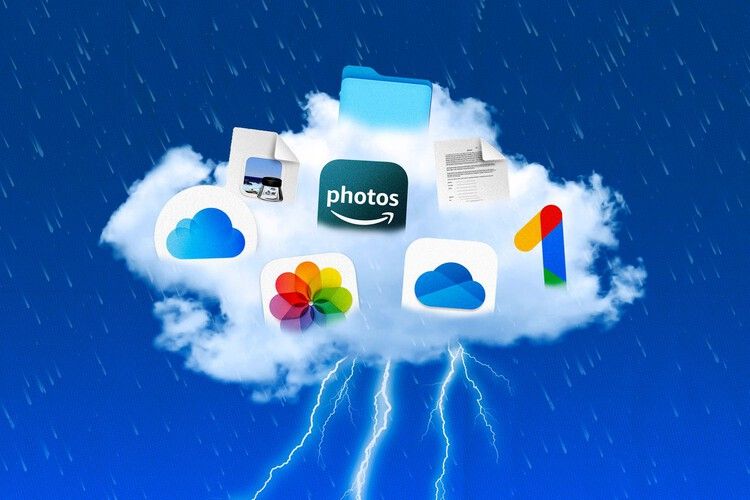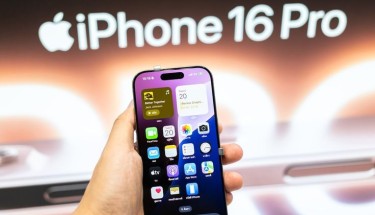Never Lose A Photo Again: Best Cloud Storage Options for You
Never Lose A Photo Again: Best Cloud Storage Options for You
In an era of digital photography, safeguarding precious memories is crucial. Cloud storage offers a reliable solution for storing and accessing data securely. By exploring different cloud storage options, photographers and everyday users can ensure their photos remain safe and accessible without the risk of losing invaluable moments.

The Best Cloud Storage Options for Photos
Now that we’ve covered the key factors to consider, let’s take a detailed look at the best cloud storage options for photos. Each of these services has its own strengths and weaknesses, so we’ll break down their features, pricing, security, and compatibility to help you make an informed decision.
1. Google Photos
Google Photos is one of the most popular cloud storage services for photos, and for good reason. It offers a user-friendly interface, seamless integration with Google’s ecosystem (including Gmail, Google Drive, and Android devices), and a range of powerful features for organizing and editing photos.
Features
-
Storage Options: Google Photos previously offered unlimited free storage for high-quality photos (up to 16MP) and videos (up to 1080p), but this feature ended in June 2021. Now, all photos and videos count towards your Google Drive storage (which includes a 15GB free tier). However, Google still offers “Original Quality” storage, which preserves the full resolution of your photos and videos, and “Storage Saver” mode (formerly High Quality), which compresses photos to 16MP and videos to 1080p to save space.
-
Automatic Backup: Google Photos automatically backs up photos and videos from your smartphone, tablet, or computer when you connect to Wi-Fi. You can choose to back up only when connected to Wi-Fi or allow backup over cellular data (with a warning about data usage).
-
Organization Tools: Google Photos offers powerful organization tools, including automatic tagging (based on people, places, things, and events), facial recognition (which groups photos of the same person), and the ability to search for photos by keyword (e.g., “beach,” “birthday,” “dog”). It also creates automatic albums for events like trips or birthdays, and “Memories” (slideshows of old photos) that appear on your home screen.
-
Editing Tools: The app includes a range of editing tools, from basic adjustments (brightness, contrast, saturation) to advanced features like portrait mode, filters, and the ability to remove unwanted objects from photos (using Google’s Magic Eraser tool).
-
Sharing: Google Photos makes it easy to share photos and videos with others. You can share individual photos, albums, or links to entire collections. You can also create shared albums where multiple people can add photos and videos, making it great for family events or group trips.
-
Integration: Google Photos integrates seamlessly with other Google services, including Google Drive (you can access your Google Photos files from Google Drive and vice versa), Gmail (you can attach photos from Google Photos to emails), and Google Assistant (you can ask Google Assistant to show you photos from a specific date or event). It also works with a range of third-party apps, including photo editing software like Adobe Lightroom.
Pricing
-
Free Tier: 15GB of storage (shared with Google Drive and Gmail).
-
Paid Plans:
-
100GB: 1.99permonth(or19.99 per year).
-
200GB: 2.99permonth(or29.99 per year).
-
2TB: 9.99permonth(or99.99 per year).
-
10TB: $49.99 per month.
-
20TB: $99.99 per month.
-
50TB: $249.99 per month.
Security and Privacy
-
Encryption: Google Photos uses AES-256 encryption for data at rest (stored on Google’s servers) and TLS/SSL encryption for data in transit (when uploading or downloading photos). However, Google does not offer end-to-end encryption for photos, which means Google can access your photos (though they state that they do not use your photos for advertising without your consent).
-
Two-Factor Authentication: Google offers two-factor authentication for your Google account, which adds an extra layer of security to your Google Photos.
-
Privacy Policy: Google’s privacy policy states that they may collect and use data from your photos (like location information) to improve their services, but they do not sell your personal data to third parties. You can control how your data is used in your Google account settings.
Compatibility
-
Devices: Google Photos is available on iOS, Android, Windows, macOS, and the web.
-
Apps: Integrates with Google Drive, Gmail, Google Assistant, Adobe Lightroom, and other third-party apps.
Pros and Cons
Pros:
-
User-friendly interface.
-
Powerful organization and editing tools.
-
Seamless integration with Google’s ecosystem.
-
Affordable pricing plans.
-
Great sharing features, including shared albums.
Cons:
-
No end-to-end encryption (Google can access your photos).
-
Free storage is limited to 15GB (shared with other Google services).
-
Storage Saver mode compresses photos and videos (though the quality loss is minimal for most users).
2. Apple iCloud Photos
If you’re an Apple user (iPhone, iPad, Mac), iCloud Photos is a natural choice. It integrates seamlessly with Apple’s ecosystem, offering automatic backup, syncing across all Apple devices, and a range of features designed specifically for Apple users.
Features
-
Storage Options: iCloud Photos stores your photos and videos in their original resolution (if you choose “Optimize iPhone Storage,” it will store lower-resolution versions on your device to save space, with the original versions in the cloud). All photos and videos count towards your iCloud storage.
-
Automatic Backup and Sync: iCloud Photos automatically backs up photos and videos from your iPhone, iPad, or Mac when you connect to Wi-Fi. It also syncs your photos across all your Apple devices, so any changes you make (editing, deleting, adding) on one device are reflected on all others.
-
Organization Tools: iCloud Photos offers basic organization tools, including the ability to create albums, tag photos with favorites, and search for photos by keyword (e.g., “cat,” “vacation,” “New York”). It also includes facial recognition (which groups photos of the same person) and location-based organization (photos are grouped by the place they were taken).
-
Editing Tools: The Photos app on Apple devices includes a range of editing tools, from basic adjustments (brightness, contrast, saturation) to advanced features like portrait mode, filters, and the ability to edit RAW photos. All edits are synced across your devices, so you can start editing a photo on your iPhone and finish on your Mac.
-
Sharing: iCloud Photos makes it easy to share photos and videos with others. You can share individual photos, albums, or use AirDrop to share photos with other Apple users nearby. You can also create shared albums (called “iCloud Shared Albums”) where multiple people can add photos, videos, and comments. Shared albums can be accessed by both Apple and non-Apple users via a link.
-
Integration: iCloud Photos integrates seamlessly with other Apple services, including iMessage (you can send photos directly from iCloud Photos), Mail (you can attach photos from iCloud Photos to emails), and Apple TV (you can view your photos on your TV). It also works with third-party apps like Adobe Lightroom and Pixelmator.
Pricing
-
Free Tier: 5GB of storage (shared with other iCloud services, like iCloud Drive, Notes, and iCloud Mail).
-
Paid Plans:
-
50GB: $0.99 per month.
-
200GB: $2.99 per month.
-
2TB: $9.99 per month.
-
6TB: $29.99 per month.
-
12TB: $59.99 per month.
Security and Privacy
-
Encryption: iCloud Photos uses AES-256 encryption for data at rest and TLS/SSL encryption for data in transit. Apple also offers “Advanced Data Protection” (formerly called “End-to-End Encryption for iCloud”) for iCloud Photos, which encrypts your photos so that only you (and those you share the encryption key with) can access them. Advanced Data Protection is optional and can be enabled in your Apple account settings.
-
Two-Factor Authentication: Apple offers two-factor authentication for your Apple ID, which adds an extra layer of security to your iCloud Photos.
-
Privacy Policy: Apple’s privacy policy states that they do not sell your personal data to third parties, and they use your data only to improve their services. With Advanced Data Protection enabled, Apple cannot access your encrypted photos.
Compatibility
-
Devices: iCloud Photos is available on iOS, iPadOS, macOS, and the web (for non-Apple users). It also works with Windows via the iCloud for Windows app.
-
Apps: Integrates with other Apple services (iMessage, Mail, Apple TV) and third-party apps like Adobe Lightroom and Pixelmator.
Pros and Cons
Pros:
-
Seamless integration with Apple’s ecosystem (perfect for iPhone, iPad, and Mac users).
-
Advanced Data Protection (end-to-end encryption) for added privacy.
-
Automatic syncing across all Apple devices.
-
User-friendly interface.
-
Great for sharing with both Apple and non-Apple users.
Cons:
-
Free storage is limited to 5GB (shared with other iCloud services).
-
Less powerful organization tools compared to Google Photos.
-
Advanced Data Protection is optional and requires manual setup.
-
Not as well-integrated with non-Apple devices (though the web app and Windows app help).







